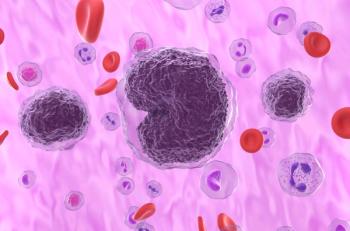
Researchers Explore Respiratory Impact of Novel Therapies in SMA
The researchers of the review discuss the reported impact of novel therapies for spinal muscular atrophy (SMA) and highlight the need for long-term data and monitoring of respiratory outcomes.
Major strides have been made in the treatment of
The researchers of the review also highlight that the potential respiratory impact of these treatments should be followed.
“Short-term pulmonary outcomes of these medications are published and longitudinal monitoring is active,” they wrote. “Most studies have demonstrated favorable responses in overall muscle strength compared to natural history, but the pulmonary outcomes vary.”
Studies included in the review revolved around 3 recently approved treatments:
- Intrathecal nusinersen (Spinraza), which the FDA approved in December 2016
- Intravenous onasemnogene abeparvovec-xioi (Zolgensma), which was approved in May 2019
- Enteral risdiplam (Evrysdi), which was approved in August of this year
Nusinersen
Although nusinersen has demonstrated efficacy on respiratory muscle function, the effect varies by SMA subtype, according to the researchers. They cited a study that found the treatment had little impact on patients with SMA1 A and B and had better response in patients with SMA1 C when it came to ventilatory and thoracoabdominal patterns.
Onasemnogene abeparvovec-xioi
In the pivotal phase 1 START trial for the gene therapy, survival data was striking, with an event-free survival of 100% without need for permanent ventilation at 20 months compared with the 8% event-free survival in natural history studies. Throughout the study, 83% (n = 10) of patients required at least 1 hospitalization for respiratory illness with increased length of noninvasive ventilation support, although no hospitalizations surpassed 8 days. Patients in the study had 1.4 respiratory-related hospitalizations per year, with a mean length of stay of 6.7 days.
According to the researchers, the study data suggest that “overall pulmonary morbidity and consequent healthcare utilization may have decreased, but some patients may still require escalation of respiratory support during illnesses.”
Other data, coming from the phase 3 STRIVE trial, the ongoing SPR1NT study, and real-world experience with the treatment in 3 tertiary centers in Ohio, have made the case for improved respiratory and nutritional outcomes with the gene therapy as researchers await long-term data.
Risdiplam
In the multicenter FIREFISH trial, 90% of the 21 patients were alive without permanent ventilation and rarely required hospitalized after 12 months of treatment. After 23 months, 81% were alive without permanent ventilation. All patients were able to swallow safely and most (95%) were able to be fed orally or with supplemental gastrostomy feeds.
Promising data have also emerged from the SUNFISH and JEWELFISH trials, both of which included patients with varying subtypes of SMA. The researchers also highlighted the RAINBOWFISH study, which is actively recruiting patients with SMA type 1. According to the researchers, the results of the study could be “transforming to those with a neonatal diagnosis of SMA type 1.”
Looking forward
Looking toward the future, the researchers of the review noted that monitoring of short- and long-term outcomes is still critical, as it’s still too early to determine sustained improvement in pulmonary outcomes. They add that currently available data come from a limited number of patients and emphasize the need for more multicenter trials to better validate the impact of novel treatments.
Reference
Paul G, Gushue C, Kotha K, Shell R. The respiratory impact of novel therapies for spinal muscular atrophy. Pediatr Pulmonol. Published online October 24, 2020. doi:10.1002/ppul.25135
Newsletter
Stay ahead of policy, cost, and value—subscribe to AJMC for expert insights at the intersection of clinical care and health economics.













































